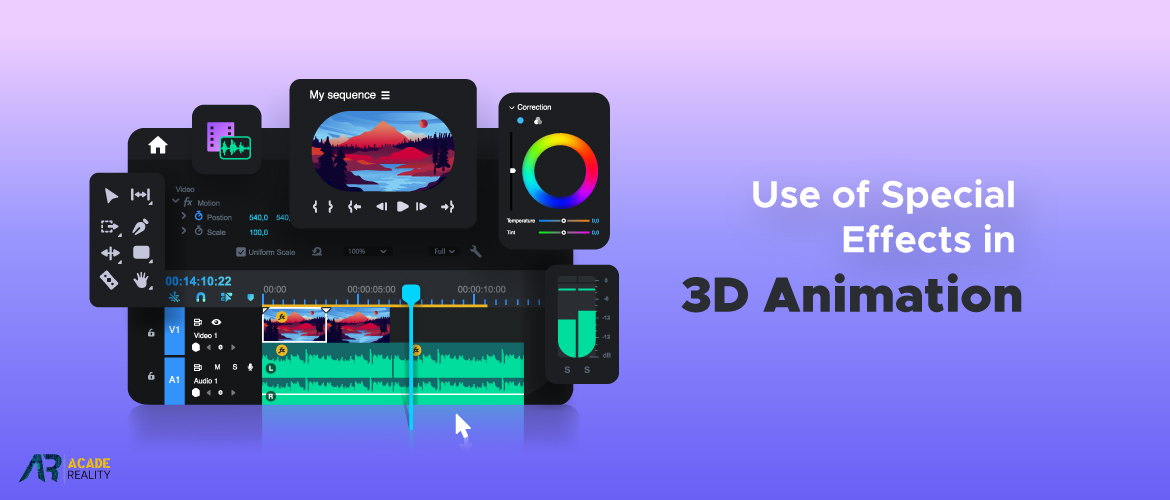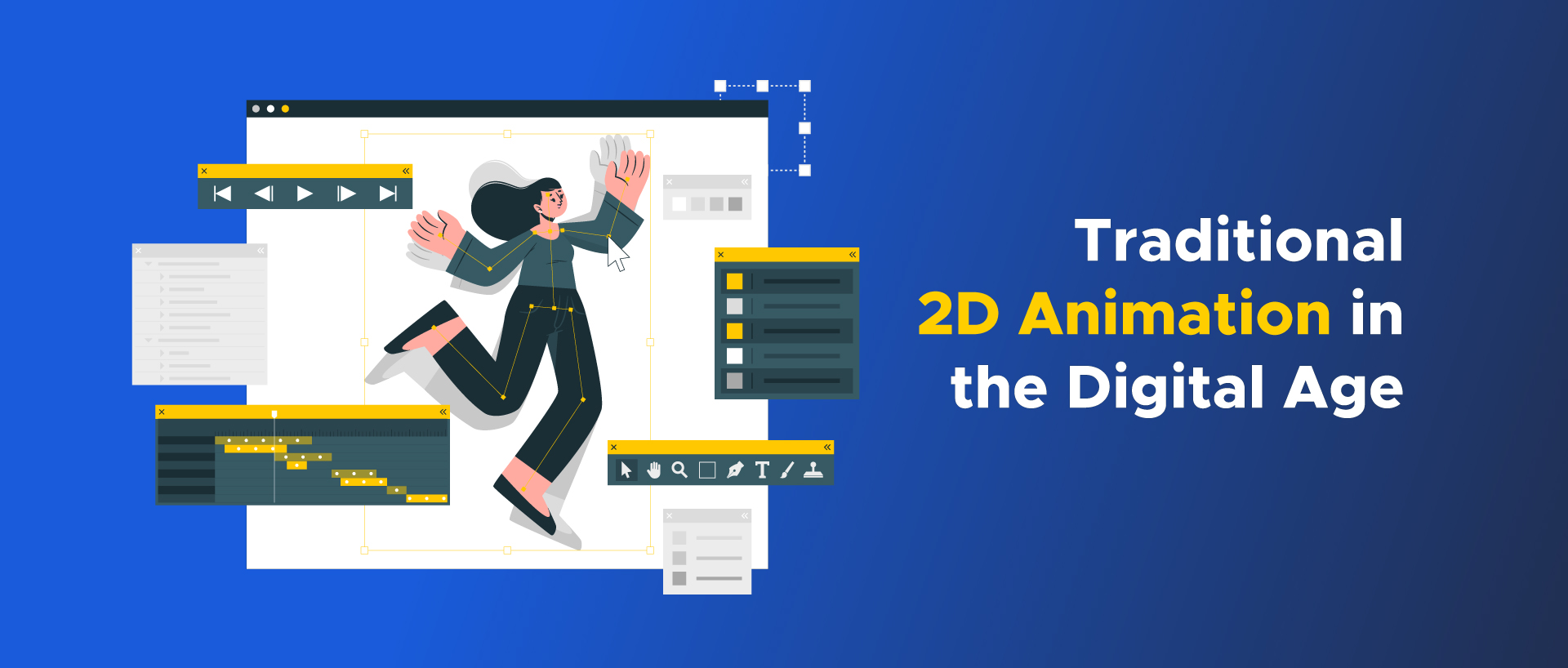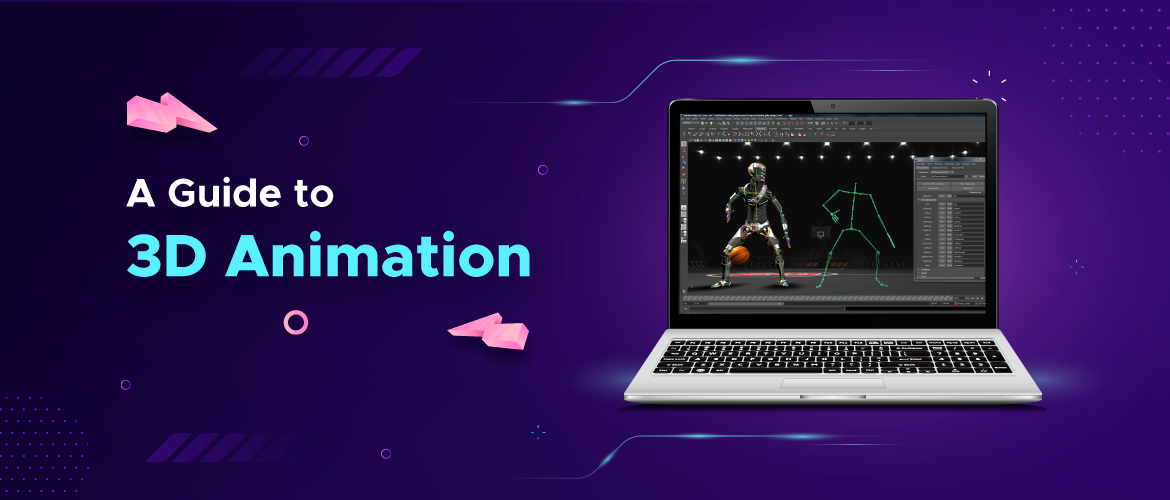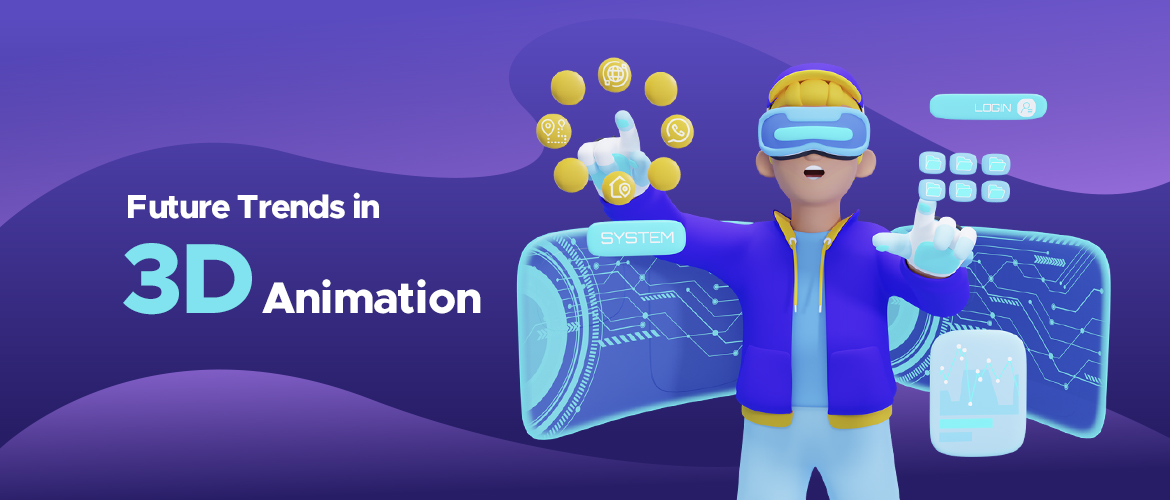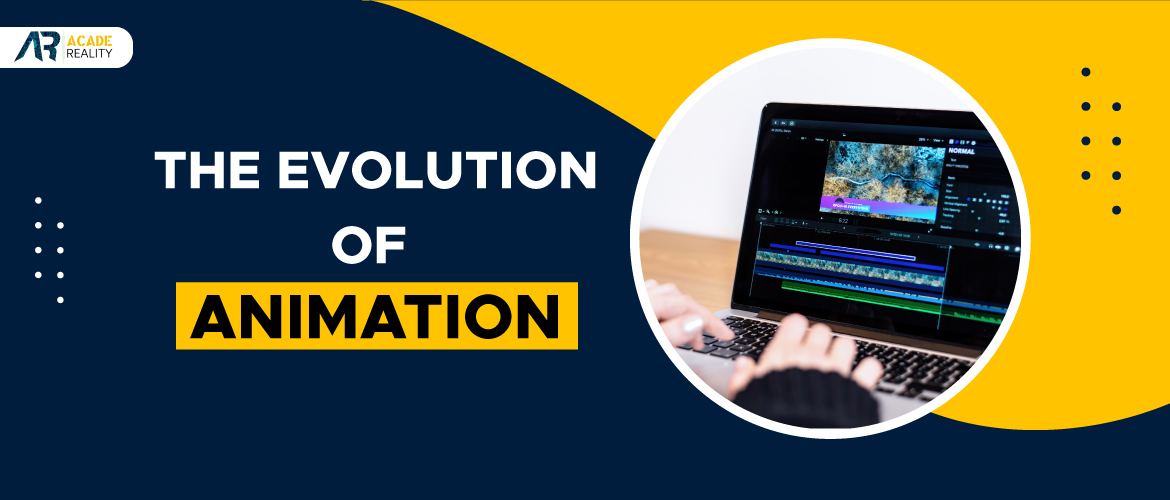Leatest Blogs
2D vs 3D Animation: Explore the Difference and Understands which is Better for your Projects?

Introduction
In the world of animation, 2D & 3D Animation are two distinct techniques that serve different purposes and have unique characteristics. Understanding the disparities between 2D & 3D is crucial when deciding which one is better suited for your projects.
What is 2D Animation?
2D animation is a traditional animation technique that has been around for decades. It involves creating images in a two-dimensional space, which means that the animation occurs on a flat plane without the illusion of depth. Here are some key characteristics of 2D animation:
1. Flat Graphics:
2D animation relies on flat, hand-drawn, or digitally created images. These images move within a two-dimensional space, giving the impression of motion.
2. Simplicity:
2D animation is often associated with simplicity and a more straightforward style. It's commonly used in cartoons, traditional cell animation, and motion graphics.
3. Cost-Effective:
2D animation is generally more cost-effective than 3D animation, making it an attractive option for projects with budget constraints.
4. Artistic Freedom:
Artists can experiment with a wide range of artistic styles in 2D animation, from minimalist designs to highly detailed and elaborate visuals.
5. Retro Appeal:
2D animation has a nostalgic and timeless quality, and it's often chosen for projects that aim to capture a classic or vintage aesthetic.
What is 3D Animation?
3D animation is a more recent and sophisticated technique that involves creating three-dimensional objects and environments. These objects are placed within a 3D space, allowing for more realistic and immersive animations. Here are some key characteristics of 3D animation:
1. Depth and Realism:
It excels at creating the illusion of depth and realism. It's commonly used in video games, movies, and architectural visualization.
2. Complex Modeling:
It require the creation of 3D models, which can be complex and time-consuming. However, they offer a high level of detail and realism.
3. Physics and Dynamics:
It often incorporate physics and dynamics simulations to mimic real-world movements, such as the way a character's hair flows or how objects interact with each other.
4. High Production Costs:
It typically involves higher production costs due to the complexity of 3D modeling and animation software. It requires powerful hardware and skilled professionals.
5. Versatility:
3D animation can be applied to a broad range of industries, from entertainment and gaming to medical visualization and product design.
Key Differences Between 2D and 3D Animation
2D and 3D are two distinct techniques with unique characteristics, serving different purposes in the world of animation. Understanding the 2D and 3D Animation difference is crucial when deciding which one is better suited for your creative projects. Let's explore the key differences that set these two animation styles apart.
1. Dimensionality:
One of the most fundamental distinctions between 2D vs 3D animation is dimensionality. In 2D animation, everything happens within a two-dimensional space. This flat, two-dimensional environment lacks depth, giving the illusion of motion through the movement of flat images. In contrast, 3D animation occurs in a three-dimensional space, allowing for depth and the creation of lifelike characters, objects, and environments. 3D animation excels at crafting a sense of realism and immersion by simulating the third dimension, making it the go-to choice for applications where a sense of depth and realism is paramount.
2. Visual Style:
Another notable 2D and 3d Animation difference lies in the visual style of both animations. 2D animation boasts a wide range of artistic styles, from simplistic and abstract designs to highly detailed and ornate visuals. The flexibility of 2D animation allows artists to experiment with different styles, making it a suitable choice for projects that require a special and artistic flair. In contrast, 3D animation tends to have a more realistic and detailed visual style. The level of detail is often dictated by the intricacies of 3D modeling. While 2D animation is celebrated for its artistic freedom, 3D animation prioritizes realism and lifelike representations.
3. Production Complexity:
The complexity of production is a significant factor that distinguishes these animation styles. 2D animation is generally less complex to produce. It involves the creation of 2D images, which can be hand-drawn or digitally designed. The process is simpler compared to 3D animation, and the production pipeline is typically more straightforward. In contrast, 3D animation is inherently more complex and time-consuming. It demands the creation of 3D models, rigging (skeletons and controls for characters), texturing, and animation. The intricate modeling and the need for realistic physics and dynamics simulations contribute to longer production times.
4. Cost:
The cost factor plays a key role in deciding between 2D and 3D animation. 2D animation is generally more cost-effective, making it an attractive option for projects with budget constraints. It requires fewer resources in terms of software, hardware, and skilled professionals. In contrast, 3D animation can be costly. The complexity of 3D modeling and the need for specialized software, powerful hardware, and skilled 3D artists make it a significant investment. High-quality 3D animation often comes with a higher price tag, which may not be suitable for projects with limited resources.
5. Realism and Immersion:
2D & 3D animation diverge in their ability to create realism and immersion. 2D animation is more focused on artistic expression and visual storytelling, often sacrificing realism for creative freedom. While 2D animation can effectively convey emotions and narratives, it may not offer the same level of immersion as 3D animation. On the other hand, 3D animation excels in crafting realism and immersion. It is commonly employed in video games and filmmaking to transport audiences to lifelike worlds, providing an unparalleled sense of immersion through its three-dimensional, realistic environments.
6. Application:
The preference between 2D & 3D should also consider the specific application of your project. 2D animation is well-suited for projects like cartoons, motion graphics, explainer videos, and 2D games. It is also a popular choice for educational content due to its simplicity and cost-effectiveness. In contrast, 3D animation is highly versatile, finding applications in a broad range of industries, including film, video games, architecture, product design, medical visualization, and more. Its ability to create realistic simulations and immersive experiences makes it a preferred choice for projects that demand complexity and depth.
Which is Better for Your Projects?
Choosing between 2D and 3D animation depends on your project's specific goals and requirements. Here are some considerations to help you decide:
1. Choose 2D Animation If:
- Budget Constraints: If your project has limited resources, 2D animation is a cost-effective choice.
- Artistic Style: If your project requires a unique and artistic visual style, 2D animation provides greater flexibility for creative expression.
- Simplicity: When your project's message can be effectively conveyed with a simpler visual style, 2D animation is a suitable choice.
- Retro or Nostalgic Aesthetic: If you want to evoke a sense of nostalgia or capture a timeless feel, 2D animation is an excellent option.
2. Choose 3D Animation If:
- Realism and Immersion: For projects that demand a high level of realism and immersion, such as video games or architectural visualization, 3D animation is the way to go.
- Complex Scenes and Characters: If your project involves complex scenes, detailed characters, or realistic simulations, 3D animation is better equipped to handle the intricacies.
- Versatility: If you need animation for a variety of industries and applications, 3D animation is versatile and can be used to a wide range of projects.
- Long-Term Investment: When you're willing to invest in high-quality production, 3D animation can provide impressive results and stand the test of time.
Animation Services: Finding the Right Fit
Whether you opt for 2D or 3D animation, it's important to find the right animation services provider for your project. Animation encompass a wide range of offerings, from character design and storyboarding to 3D modeling and rendering. When seeking animation 2D vs 3D services, consider the following:
1. Experience:
Look for an services provider with a way record of successful projects in your chosen animation style (2D or 3D).
2. Portfolio:
Check their portfolio to assess the quality of their work and see if it aligns with your project's vision.
3. Client Reviews:
Read client reviews and testimonials to measure the provider's reliability and professionalism.
4. Communication:
Effective communication is crucial. Ensure that the provider can understand and execute your project's requirements.
5. Cost and Timelines:
Request quotes and timelines from different providers to compare costs and project completion times.
6. Flexibility:
Confirm that the services provider is open to revisions and adjustments throughout the project.
Wrapping Up
The choice between 2D and 3D ultimately depends on your project's specific needs, budget, and creative goals. Both techniques offer unique advantages, and the conclusion should be based on what will best serve your project's objectives. By understanding the differences between 2D & 3D making an informed choice, you can bring your creative visions to life with the most suitable animation technique.
If you're looking for 2D and 3D animation services to bring your project to life, consider reaching out to a professional animation studio. They can guide you through the process, from concept to final animation, ensuring that your vision is realized in the best possible way. For more information about services, feel free to explore our Animation Services page.
Whether you choose 2D or 3D animation, the world of animation offers endless possibilities for storytelling, entertainment, and education. With the correct approach and a talented team, you can create captivating animations that leave a lasting impression on your audience.
You Might Like
